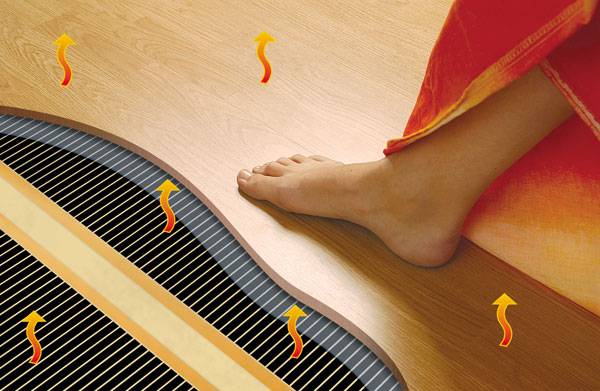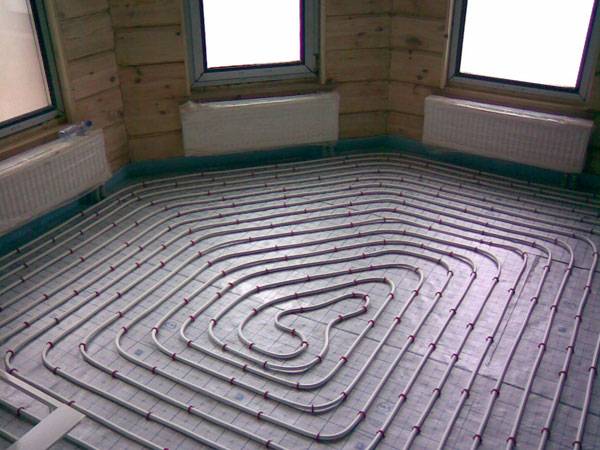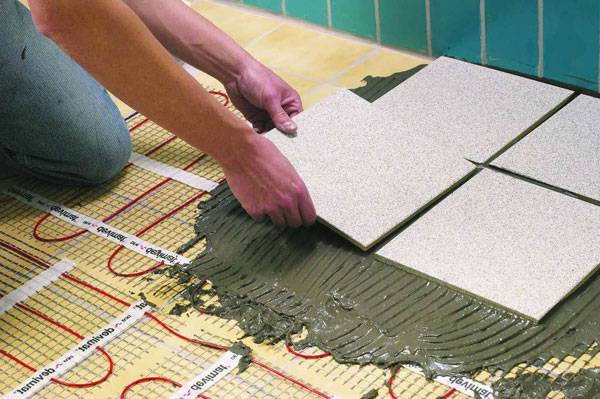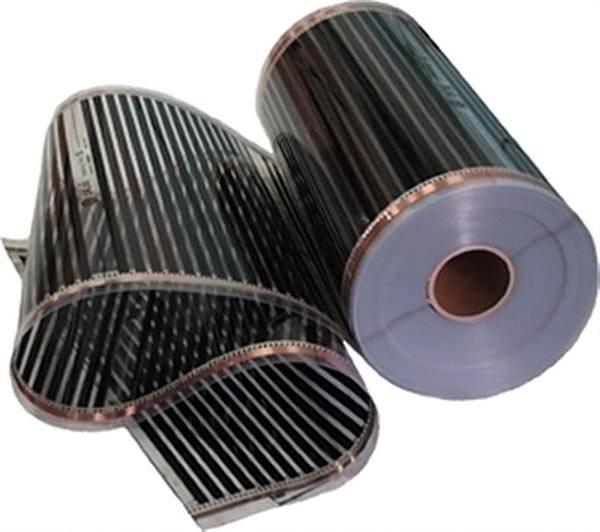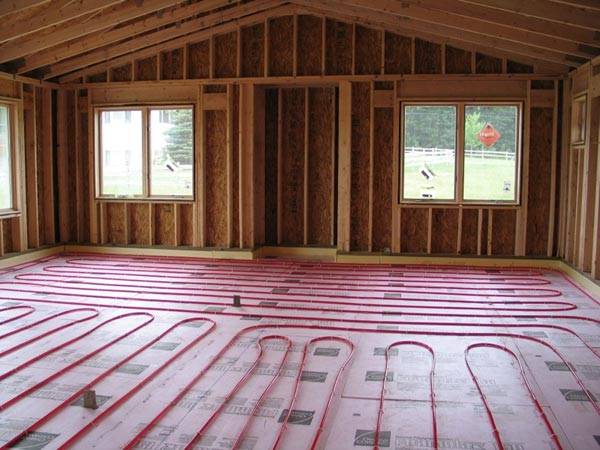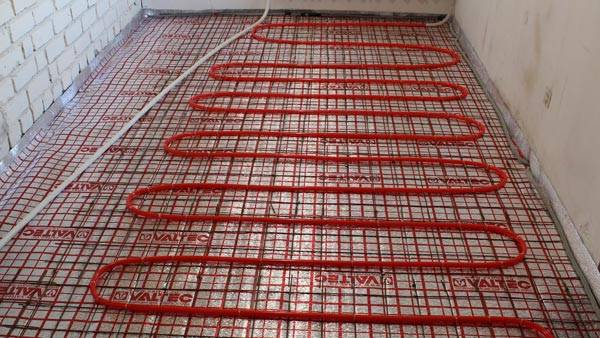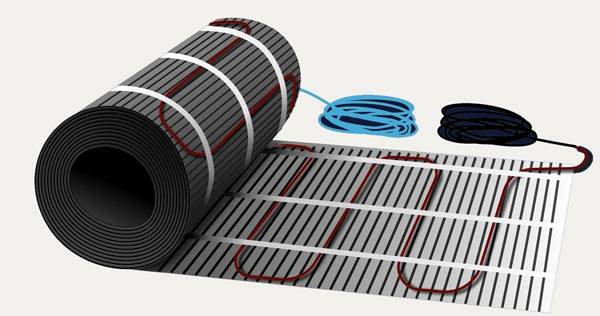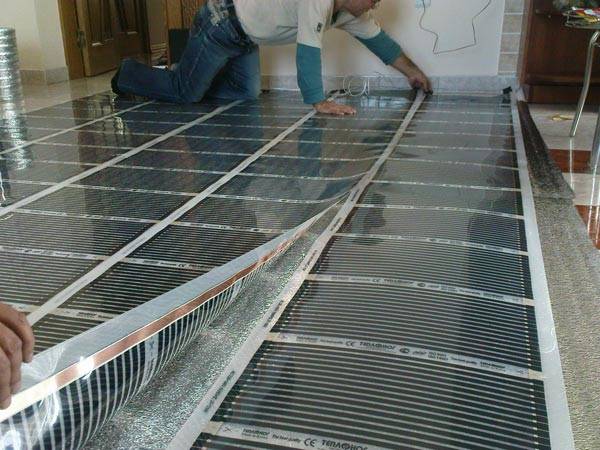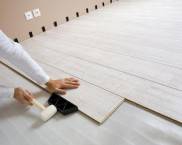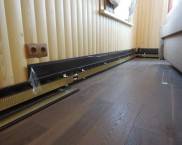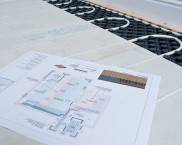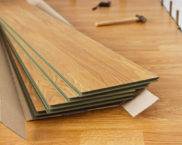How to make a warm floor under the laminate on a concrete floor
Who does not know the eternal truth if the legs are warm, then a person will never freeze? At this stage in the development of building technologies, it is possible to create a warm floor under the laminate on the concrete floor. It is advisable to use laminate flooring in the role of flooring, since it has all the necessary characteristics, but the conversation is not about it, because before you carry out its flooring, you need to equip a warm floor, we will talk about it today.
The content of the article
What are the selection criteria?
For warm floor for a laminate with a concrete base, you can choose the following arrangement options:
- Water heating is a safe and reliable heating option. The base heats up evenly, which guarantees a long life of the laminate.
- Electric - most often used for point (local) heating, serves as an additional source of heat.
- Film infrared - the most popular type today, it guarantees optimal heating for the laminate. It is the specific arrangement (every 5 mm) of the heating elements on the film web that protects the laminate, which does not undergo cracking.
When choosing this or that type, it should be borne in mind that laminate is a floor covering based on 90% wood. And it is just as capricious as an ordinary wooden one. This means that under the influence of moisture and temperature in the room, it will shrink or become saturated. If it is heated, then the loss of moisture will be more intense. That is why, in order not to suffer after installation, you need to choose the right material before that. This means that any laminate do not lay on a warm floor. First you need to choose the right class and check whether it allows heating to the temperature of the coolant, otherwise you can get allergic reactions due to the release of formaldehyde when the floor is heated.
Mounting
Each type of underfloor heating for a concrete-based laminate has corresponding installation features, we will briefly consider each.
The first type is water floor.In a simplified form, it has the form of flexible pipes laid along a certain system through which warm water moves, from above this installation poured with concrete screed. This type involves the installation of several layers, here they are in the sequence of their arrangement:
- The existing concrete base is laid waterproofing... At the same moment, it is necessary to lay the damper tape around the perimeter.
- Next, a heat-insulating layer is mounted, it is most convenient to use foam, the thicker it is, the better the effect can be achieved. But here it is important to control the level of raising the floor so that it does not exceed the rest of the house.
- They are mounted on the insulation pipes made of metal-plastic, it is important that they withstand high temperatures. They need to be fixed using special fasteners, dowels. Do not forget to make a pipe outlet for connection to the heat exchanger.
- From above, the pipes are poured with a screed, and a laminate is already mounted on it in accordance with the rules for carrying out such work.
The total thickness of the warm floor under the laminate on the concrete floor varies from 5 to 15 cm.
The electric underfloor heating has an electric cable, which actually performs the heating function. Here the energy of electricity is converted into heat. In living rooms, it is advisable to use a two-core cable, it emits less radiation. Although there are options for this type of arrangement with a solid wire. For such warm floors, a self-regulating cable is mainly used, which is also used to heat water pipes. This type of cable will not allow overheating at one point, since thanks to the matrix, which is placed along its entire length, it itself determines where to add heat energy and where to take it away.
The installation scheme looks like this:
- Cleaning the floor from dirt, installing thermal insulation if necessary, but it is not mandatory. With regard to filling the screed, then it is done as needed, its thickness is not more than 30 mm. Here it is necessary to use a reinforcing mesh.
- Such a floor must stand for at least 2 days before laying the cable.
- It is necessary to lay the cables clearly according to the manufacturer's instructions.
- Before fixing sensor and thermostat, you need to make sure that the system is functioning, if everything works. Then you can make a screed from above, its thickness is 3-10 cm.
- You can install the laminate one month after the completion of the work.
Manufacturers offer a slightly simplified version - special mats are produced for this, the cable is already fixed on them, you just need to lay them and make a tie on top.
Well, the last type is infrared warm floor - the most optimal solution for laminate flooring today.
Its installation includes only 3 steps:
- Laying heat-reflective material.
- Infrared film laying.
- Polyethylene coating.
Advantages and disadvantages
All types of underfloor heating have common advantages, such as the possibility of even distribution of heat and high efficiency, as well as aesthetics.
But each of the types presented above has its own individual advantages and, of course, disadvantages, further we will consider them.
Water-based - safe and reliable, and if there is natural circulation, it is also autonomous. But it is difficult to install, it requires the obligatory pouring of the screed over the pipes. Steals the height from the premises and is very difficult to repair.
The electric one has also proven itself as reliable and durable (over 20 years). This type is easy to install, and it is possible to regulate the optimal temperature conditions in the room. In contrast to this, weak electromagnetic radiation and high cost of the arrangement.
Infrared underfloor heating under a laminate on a concrete floor is reliable and durable, easy to install, no screed is required for pouring. After arranging such a warm floor, you can immediately lay the laminate. Plus, they practically do not reduce the height of the room and are the most economical of all. But they are very expensive, they cannot be used in wet rooms, for laying the film, more precisely, in order not to damage it, an even base is necessary.
conclusions
Underfloor heating under a laminate on a concrete floor is a guarantee of your comfort in the most severe frosts. Before choosing one or another type of arrangement of such a heating element, weigh the pros and cons, so that you do not regret the work done later.
Video: installation of an infrared warm floor under a laminate



